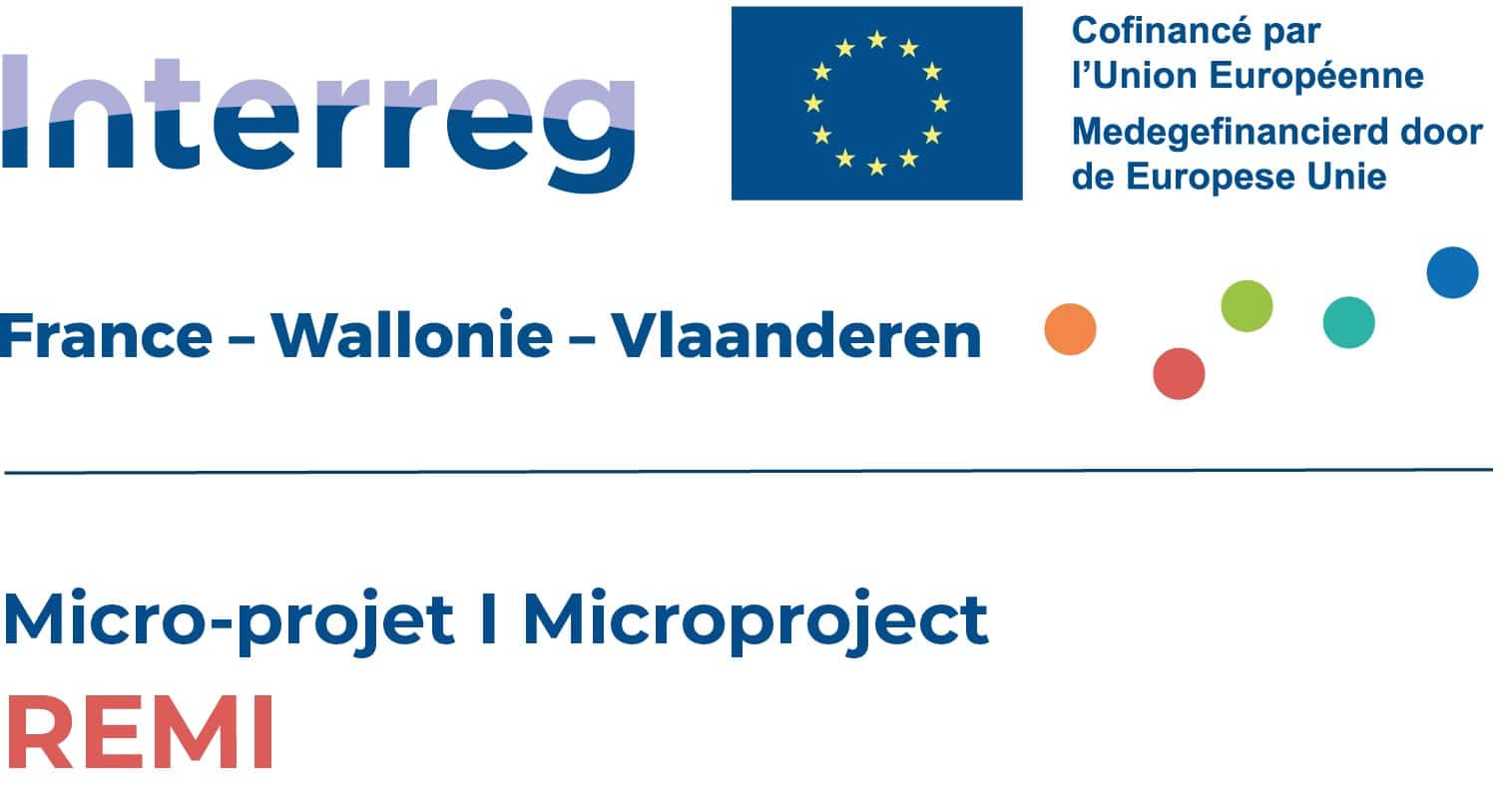Interreg REMI Project
REMI: Réseau archéologique d’Études et de Mise en Valeur Interrégionale (Interregional archaeological study and showcase network)
The REMI project aims to enhance two remarkable archaeological sites, the villa at Warcq (France) and the sanctuary of Matagne-la-Grande (Belgium)both dating from the Roman period. The overall aim is to provide innovative explanatory aids for these sites, and to develop the remains in such a way as to perpetuate them and ensure that they are understood by the public, while at the same time making them part of a cross-border tourist trail.
The Rèmes diagonal
Just 35 leagues (or 53 km!) apart, the two sites bear witness to the ancient city of the Rèmes. The Roman Empire had its own administrative districts, and that of the Rèmes (whose capital was Reims) extended beyond the borders we know today! Warcq and Matagne are two sites emblematic of life in Roman times: on the one hand, a villa*, an agricultural estate belonging to an aristocratic elite; on the other, a religious sanctuary marking the city’s boundary.
These two sites illustrate the complexity of Roman life: both are in Gaul-Belgium, a rich province producing and exporting its products (especially cereals) throughout the empire. Beyond the agricultural and economic world, they belong to the same political and religious world, which regulated and influenced all aspects of daily life. Bringing these two sites together is also a way of opening a window on antiquity!
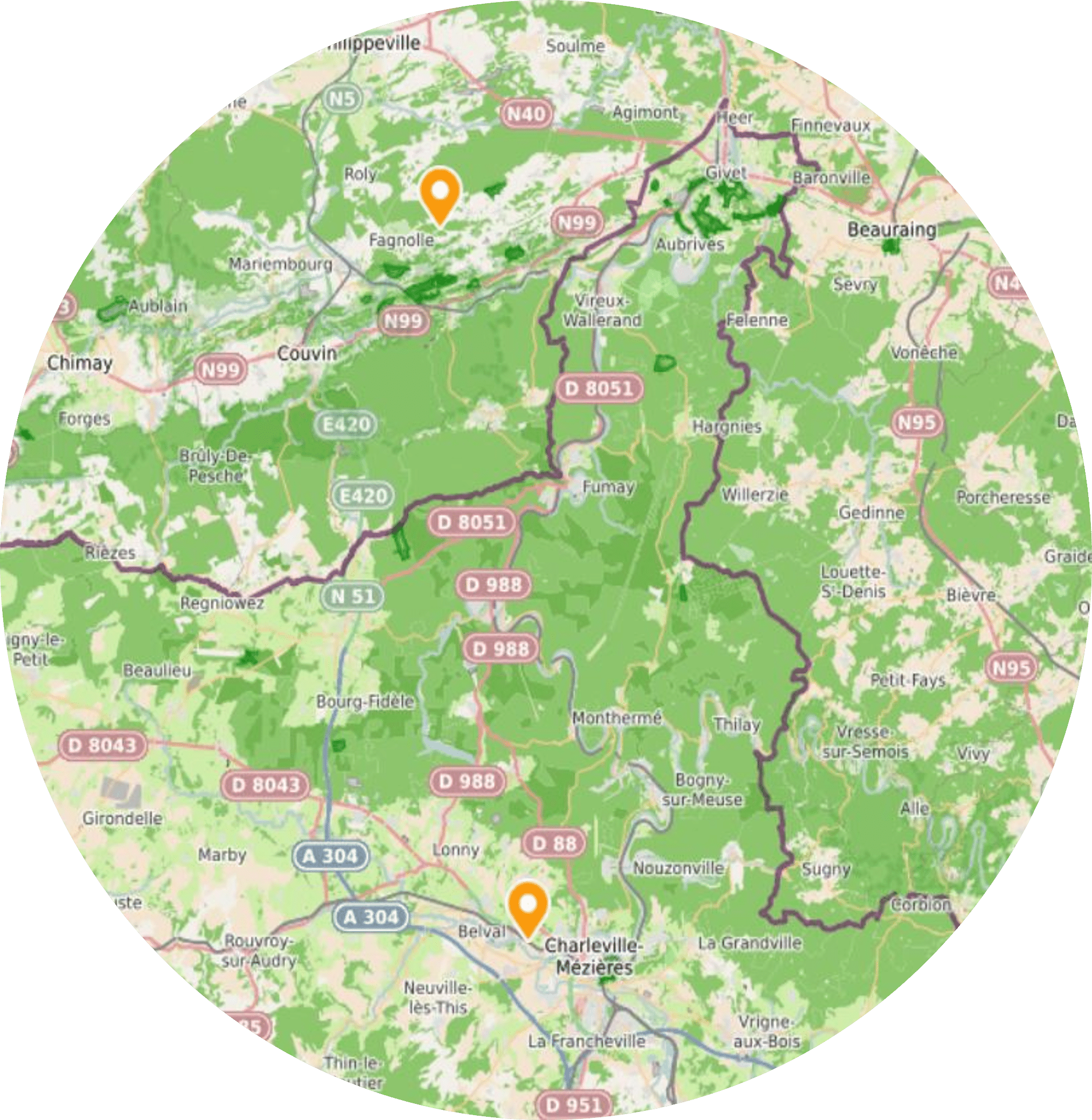
The Roman villa at Warcq
- Warcq, France
- Discovered in 2017
- Excavated from 2021 to 2025
In Warcq in 2017, archaeologists from the Ardennes archaeological service uncovered the remains of a small Roman spa complex during a preventive excavation. Between 2021 and 2025, programmed excavations revealed the layout of the entire site: a Roman villa covering more than 600 m².
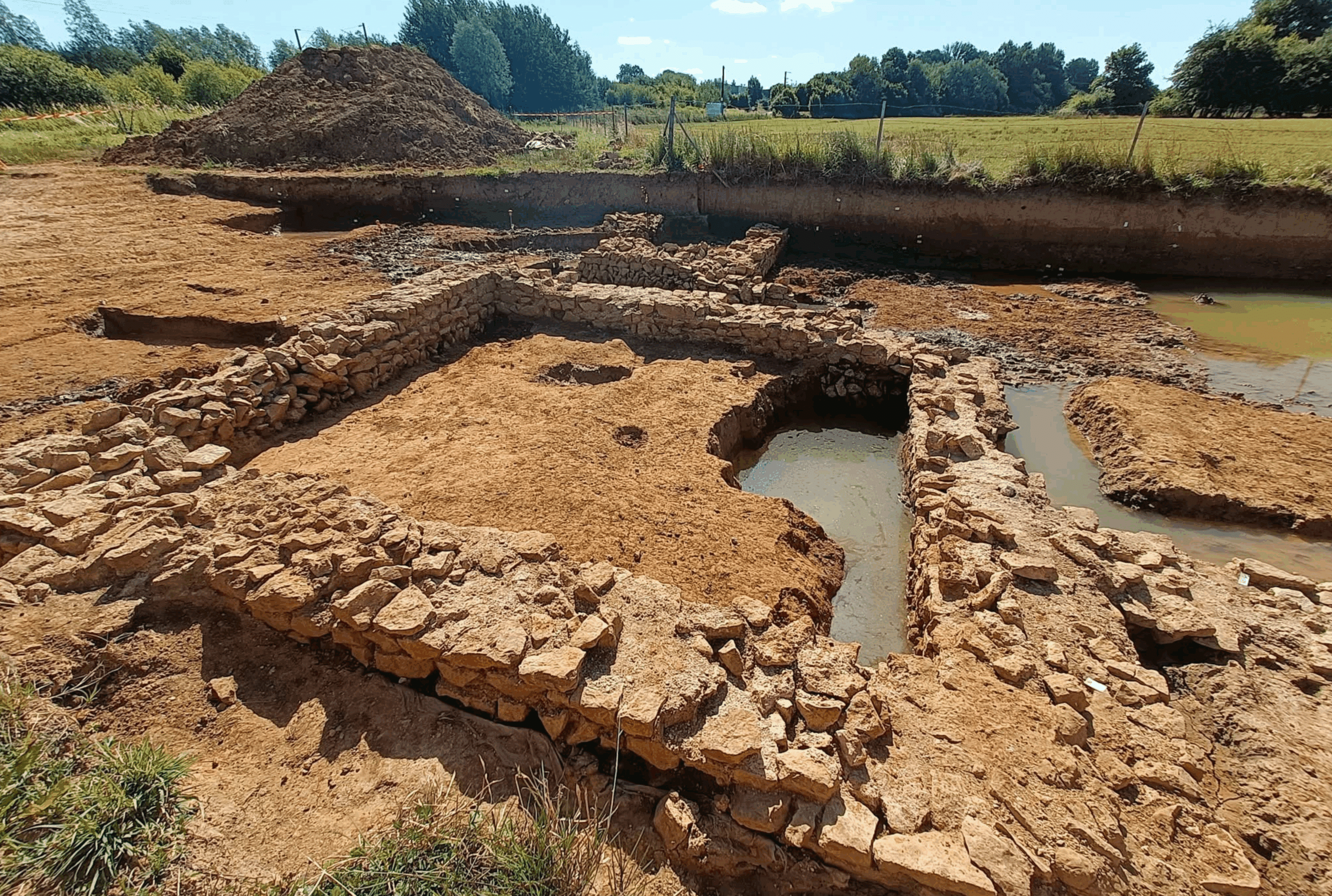
The Gallo-Roman sanctuary at Matagne
- Matagne-la-Grande, Belgium
- Discovered in 1973
- Excavated from 1975 to 1981 and from 1994 to 2010
The Matagne sanctuary, discovered in 1893 and excavated from 1975 to 1981 and again from 1994 to 2010, consists of two temples built within a sacred area of 64 ares (!), bounded by an enclosure wall that was later equipped with a double portico façade. Other buildings, including a third temple, are located outside the enclosure.
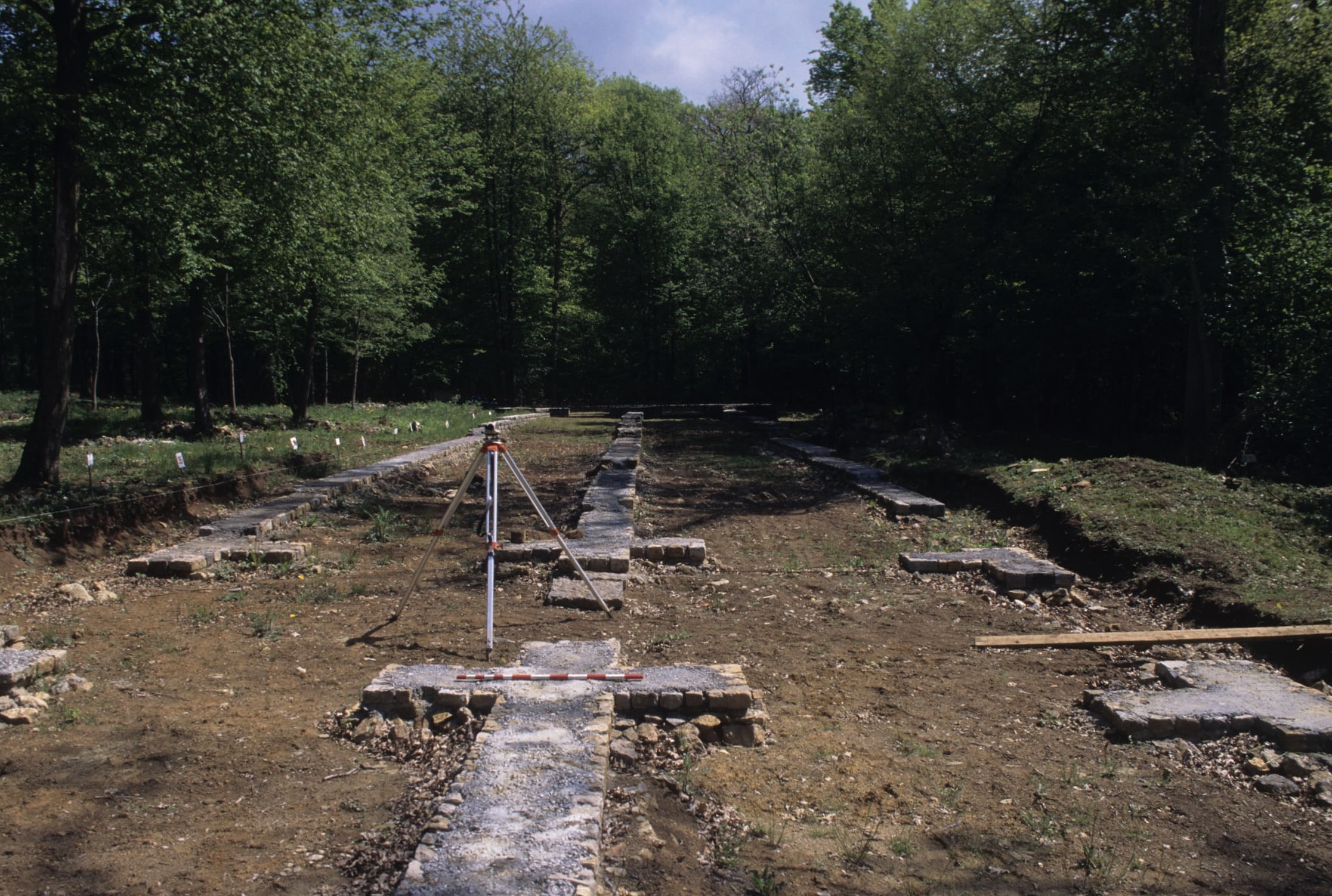
A journey without borders
The approach adopted is to create a “borderless” tourist trail by including two sites, both exceptional from a scientific and preservation point of view. Although they belonged to the same political and social entity two thousand years ago, namely the Roman territory of the city of Rèmes (Remi in Latin), today they are located on either side of the Franco-Belgian border, as are the research and development institutions involved in promoting the sites.
One of the original aspects to which this project aspires is the the creation of an itinerary that ignores the barriers of borders and time. To make this tour a reality, we need to work together to enhance the archaeological heritage, so as to recreate the uniqueness of this archaeological region in the image of its situation under the Roman Empire.
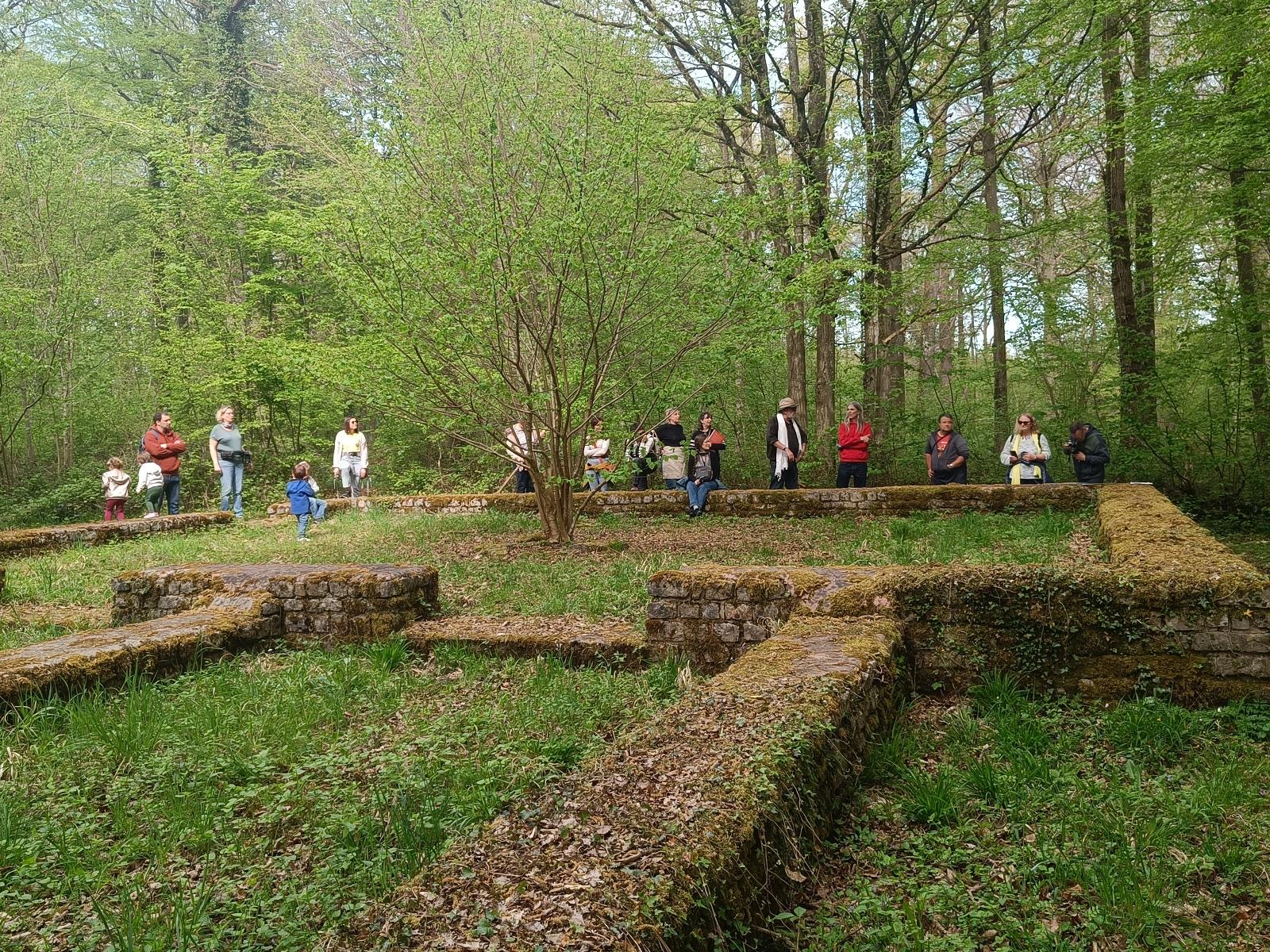
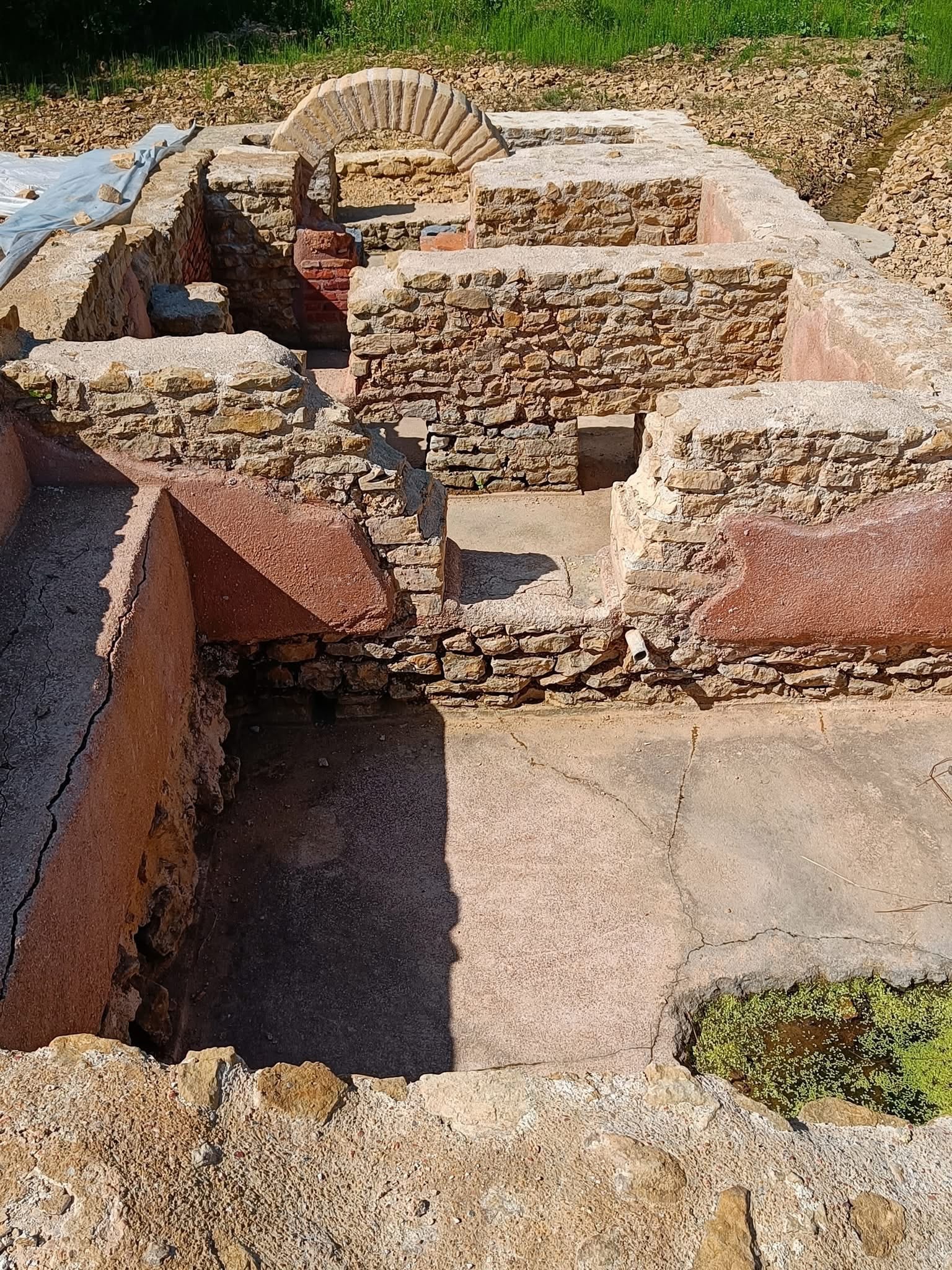
Objectives & resources
This project, although seemingly classic, has some particularly innovative and original aspects:
- meeting professional archaeological research operators;
- visit the creation of immersive mediation ;
- an edutainment system that links the various points of the course;
- from sustainable and passive devices that do not alter the archaeological remains or the environment.
The objectives of this project are manifold:
- a regional approach with the creation of a tourist trail between Matagne and Warcqalso drawing on existing visitor facilities (theDoische tourist officetourist office, the Musée du Malgré-Tout and the Musée de l’Ardenne) ;
- a local approach, with the enhancement of the remains on each site, with the creation of appropriate media to enable all audiences to understand and visualize the ancient sites;
- a qualitative mediationThe mediation materials synthesize unpublished, recent scientific data, renewing the approach to Ardennes antiquity;
- and playful mediation aimed at encouraging local, regional and international audiences to move from site to site to discover the ancient territory via a game deployed on the various operators’ equipment.
Our partners

The Department of the Ardennes is the owner of the ancient remains of the Warcq villa, and its archaeological department has carried out the preventive excavation (2017) followed by programmed excavations (2021-2025). The Département, with the support of the Cellule archéologique, is responsible for preserving and promoting the Roman villa. Its staff are experts in the science of ancient villas and the Roman era in general. The department also develops tools and workshops to enhance the value of archaeological discoveries and make them accessible.
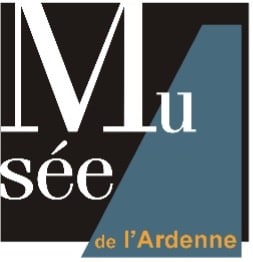
The Musée de l’Ardenne of the city of Charleville-Mézières preserves in its collections and presents in its permanent tour a part of the archaeological furniture _ in particular Gallo-Roman _ unearthed in the Ardennes department. The museum was the main contributor to the volume of the Carte archéologique de la Gaule (CAG) devoted to the Ardennes. The museum welcomes some 40,000 visitors a year and, as a “Musée de France” accredited establishment, has a public relations department capable of promoting local archaeological discoveries and making them accessible to as many people as possible, especially schoolchildren.
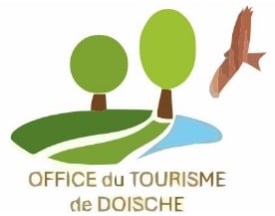
L’Doische Tourist Office promotes the various aspects of its territory and region in terms of tourism: organization of local events; promotion of the built and natural heritage present in the commune of Doische; creation of discovery trails with local artisans/producersand development of a cross-border agritourism strategy.
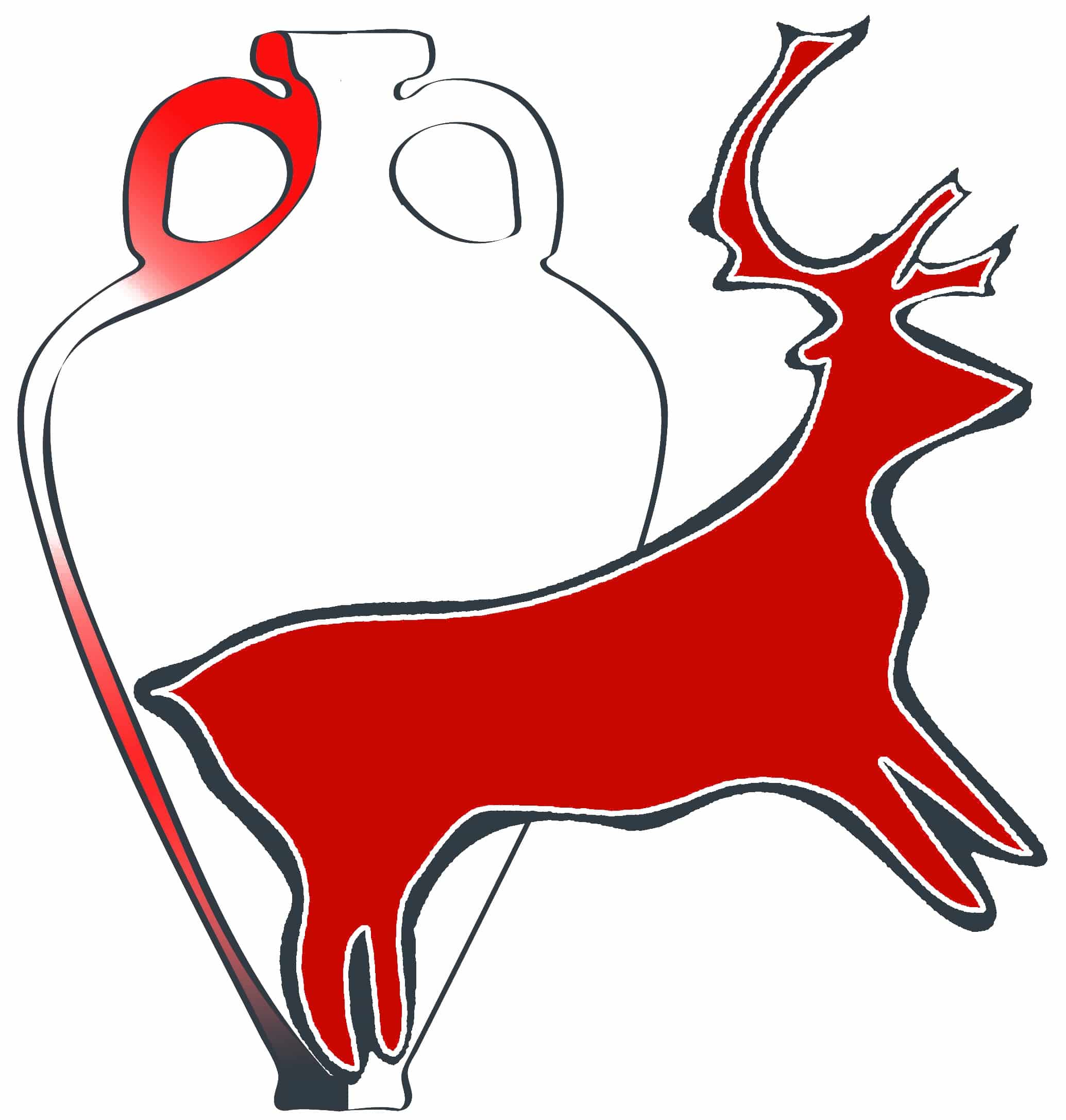
The Cedarc/Musée du Malgré-Tout is dedicated to studying and promoting the prehistoric and Roman archaeological heritage of the southern Entre-Sambre-et-Meuse region (Belgium). Since its creation, the museum has maintained a scientific program ranging from field research (excavations and archaeological prospecting) to the publication of summary studies of villas and religious sites from the Roman period. In this context, Cedarc-Musée du Malgré-Tout has been co-directing research and development of the remains of the Matagne-la-Grande sanctuary since 1996, owning part of the site. It holds the archives of the sanctuary excavations and the archaeological furniture.

